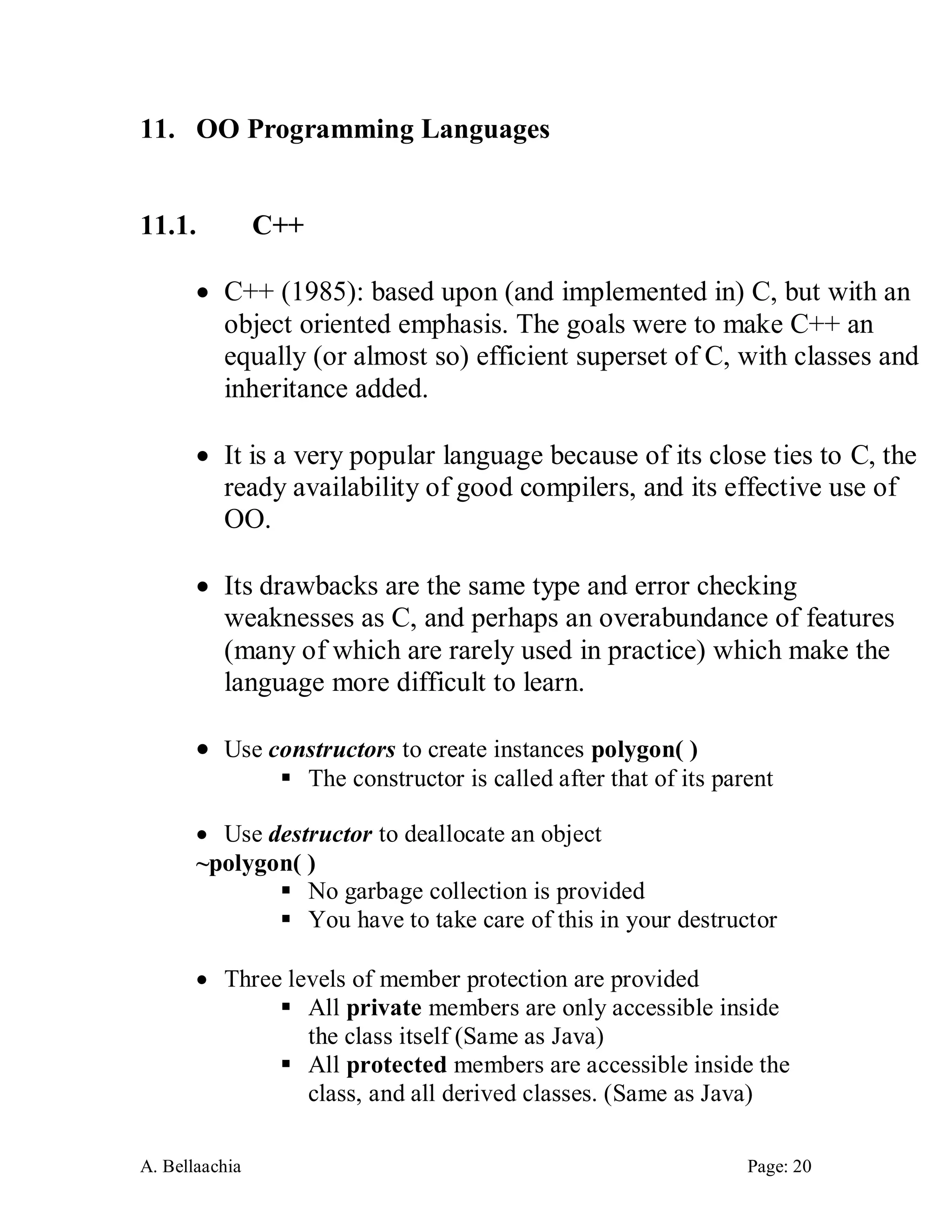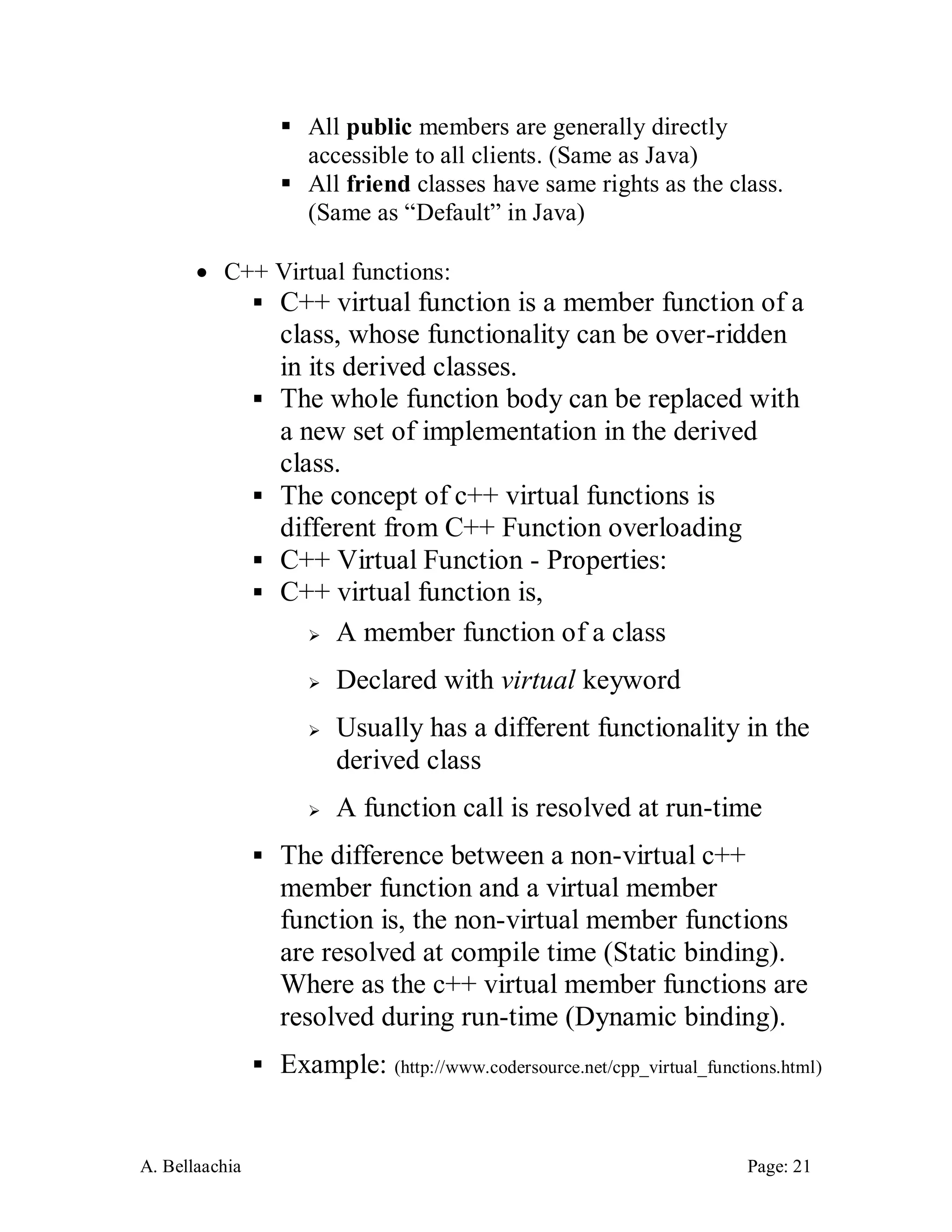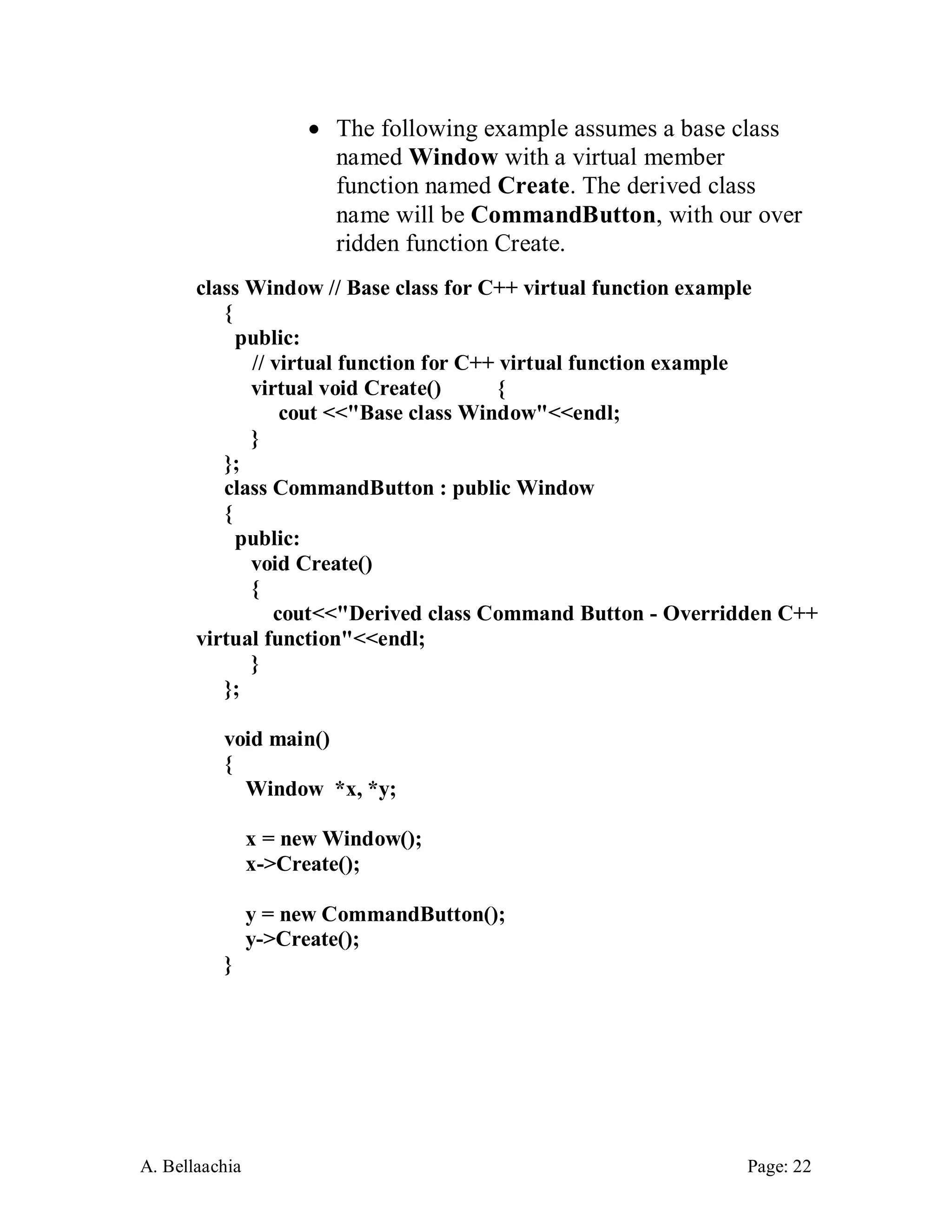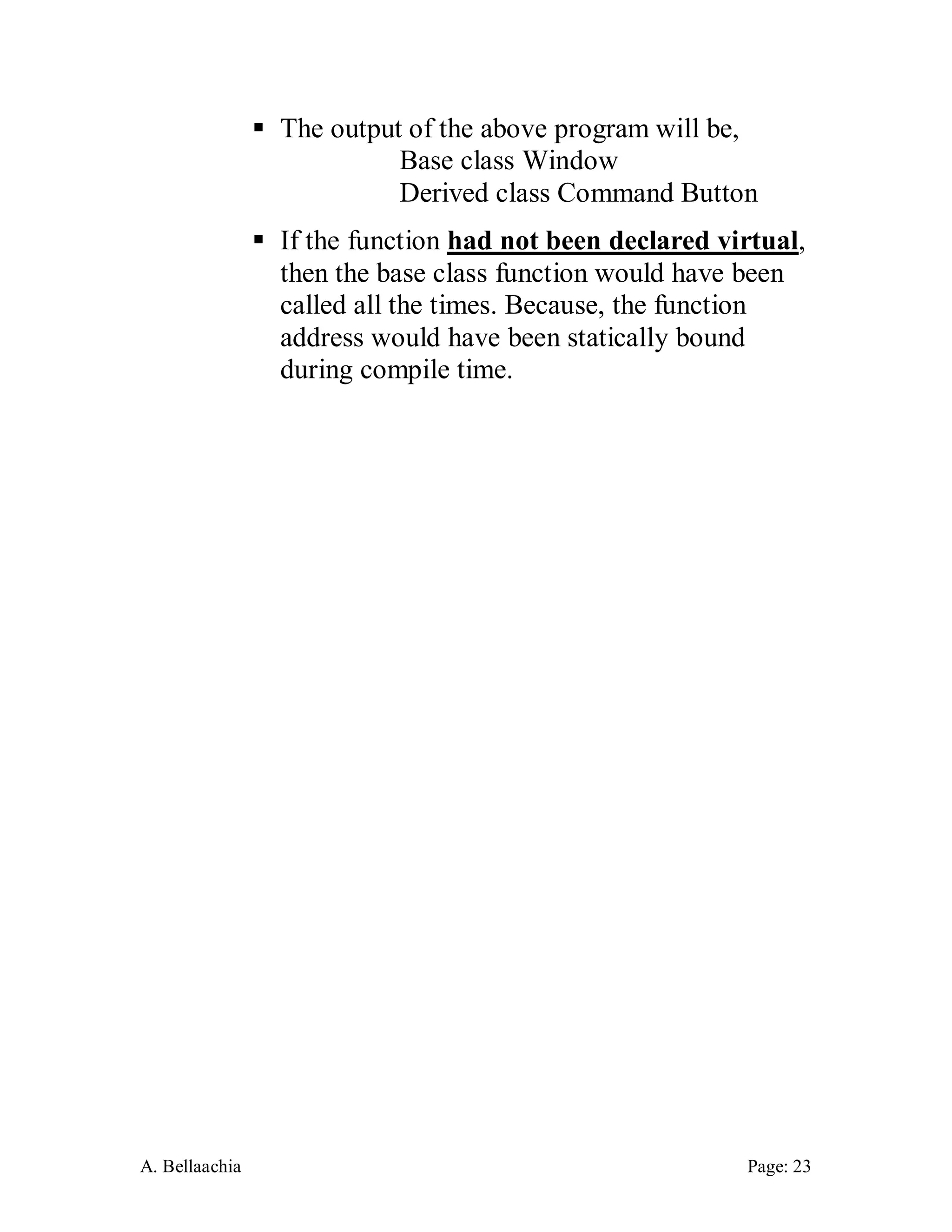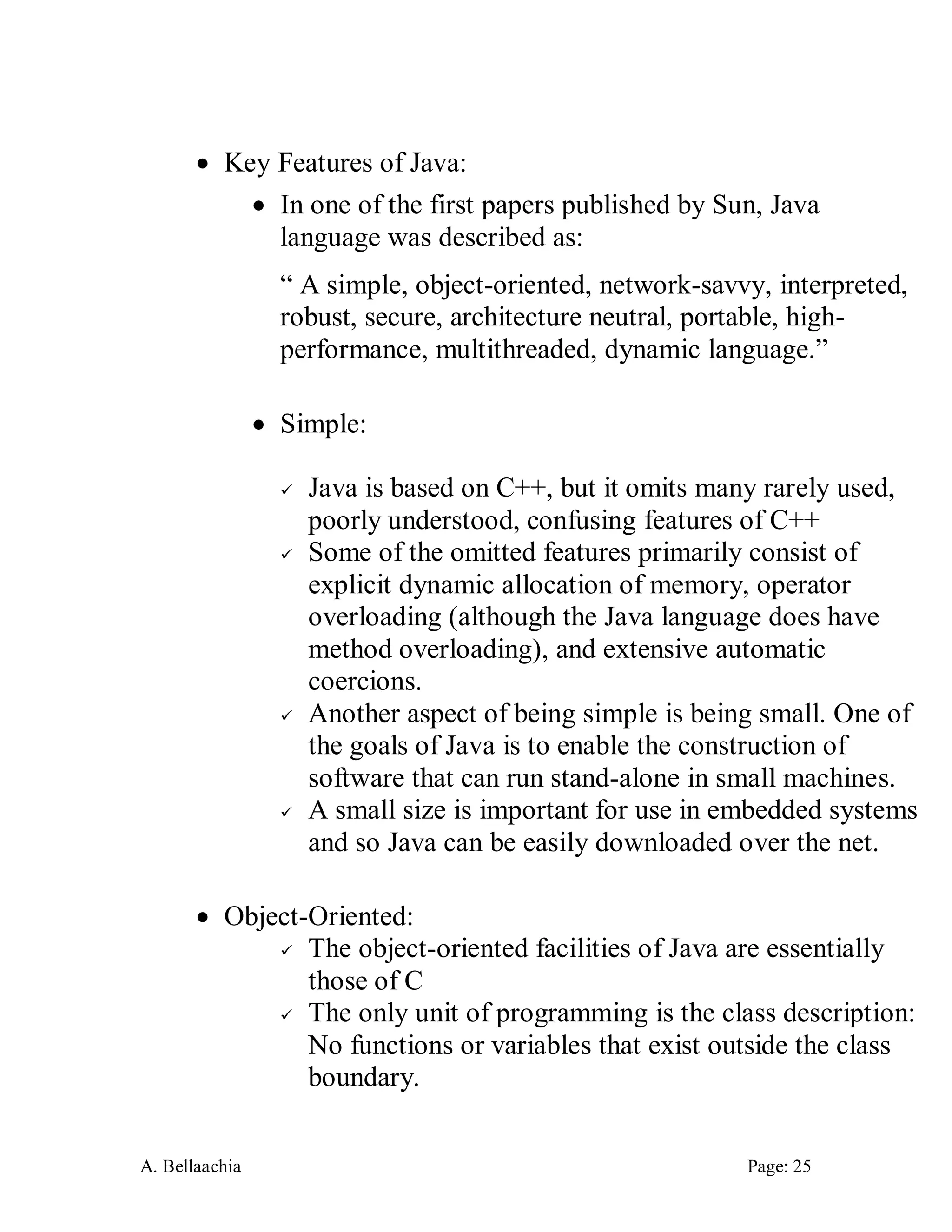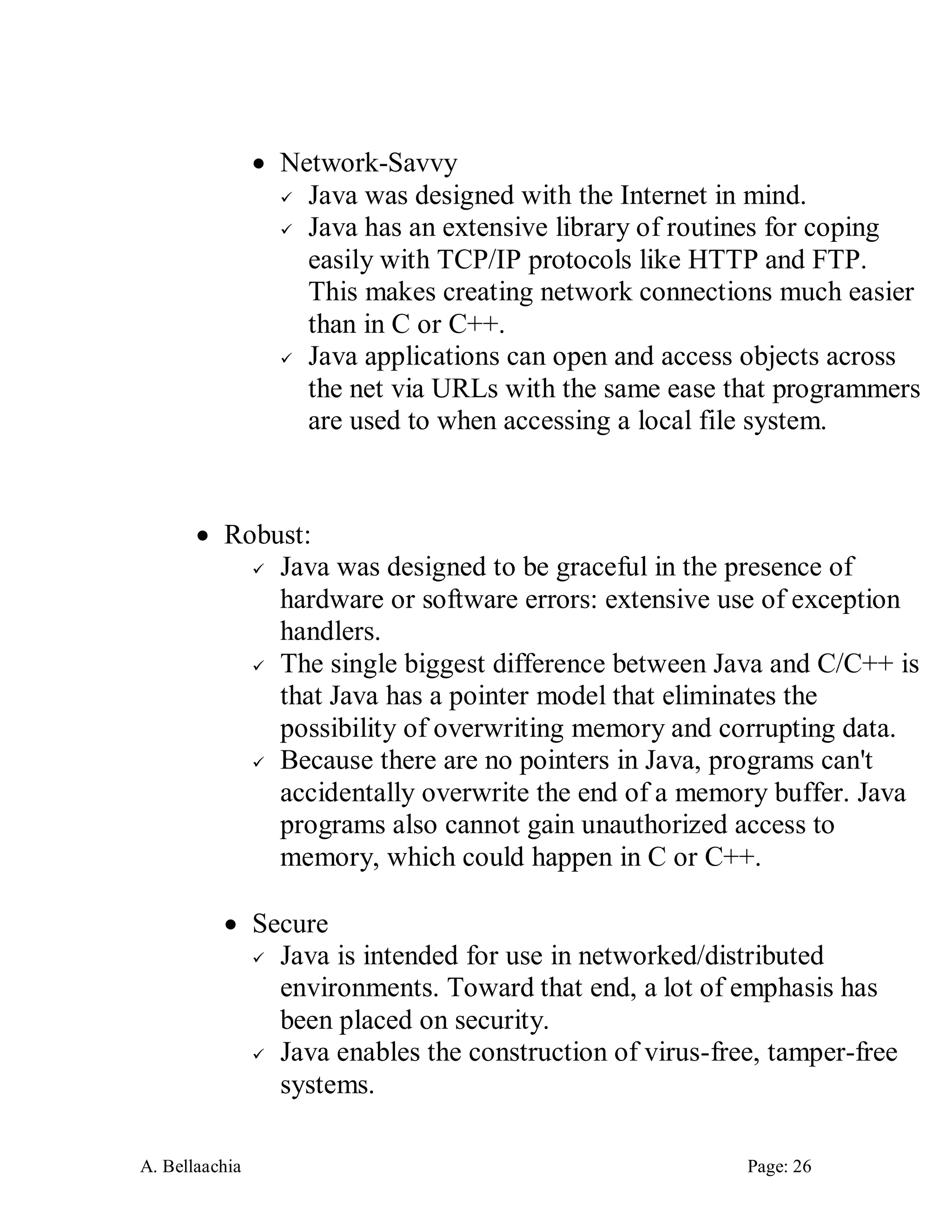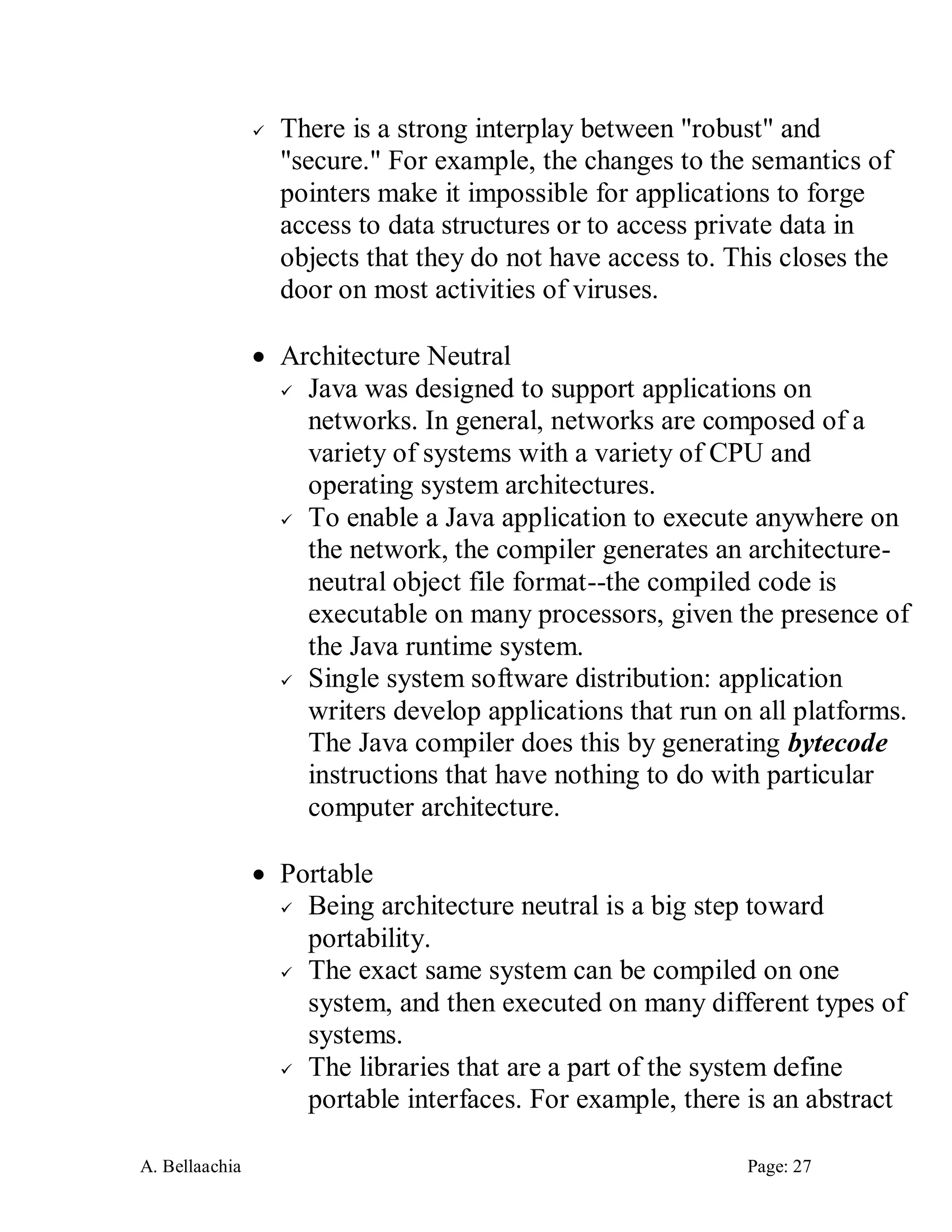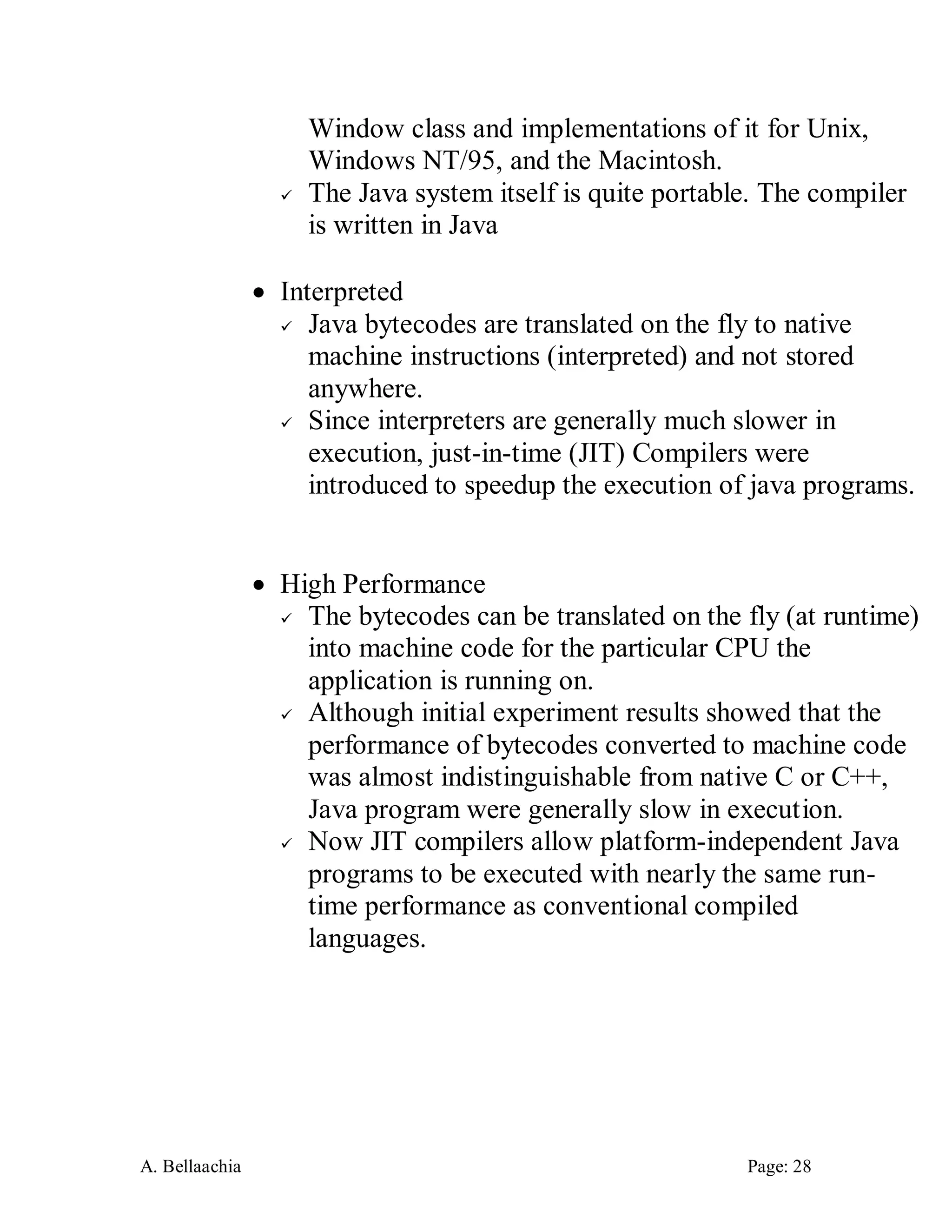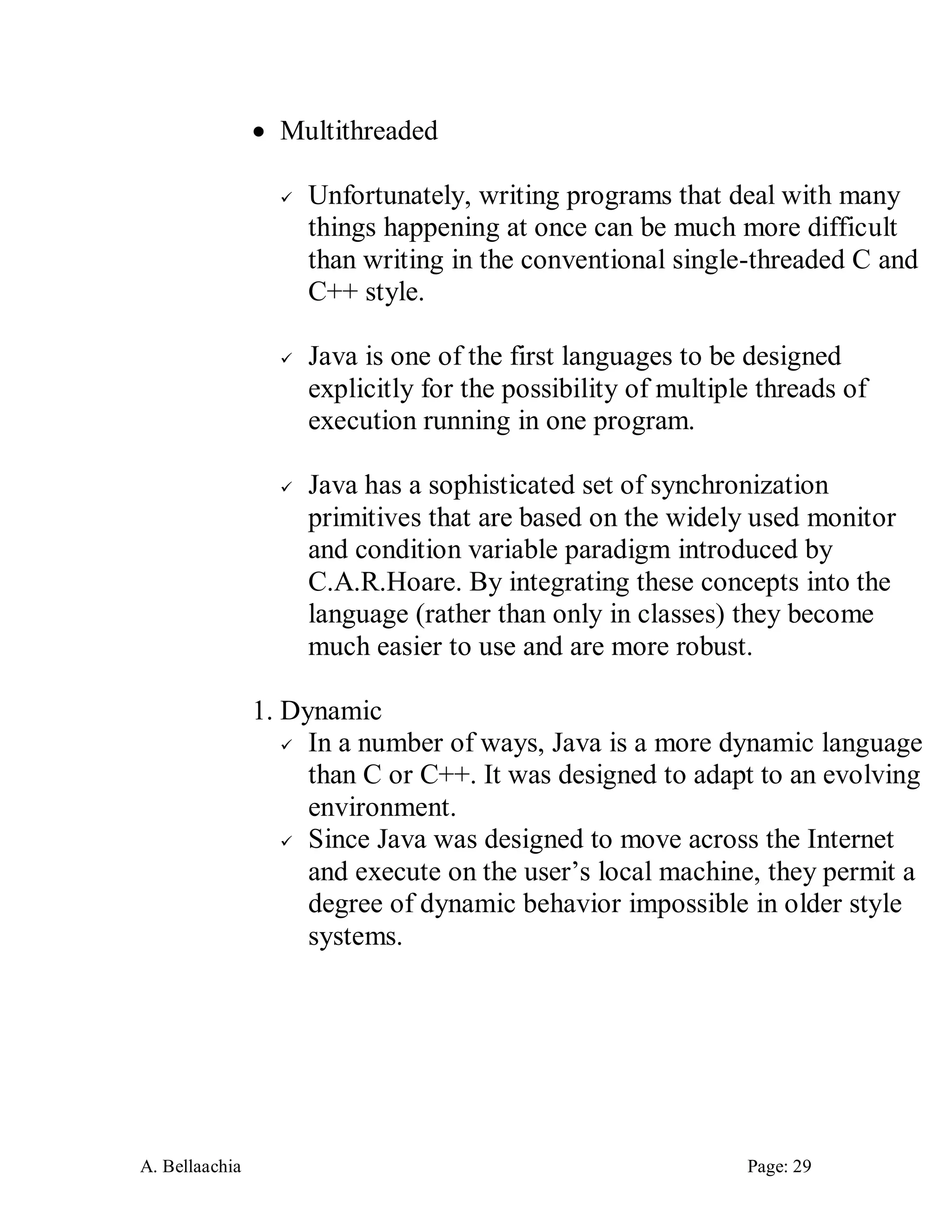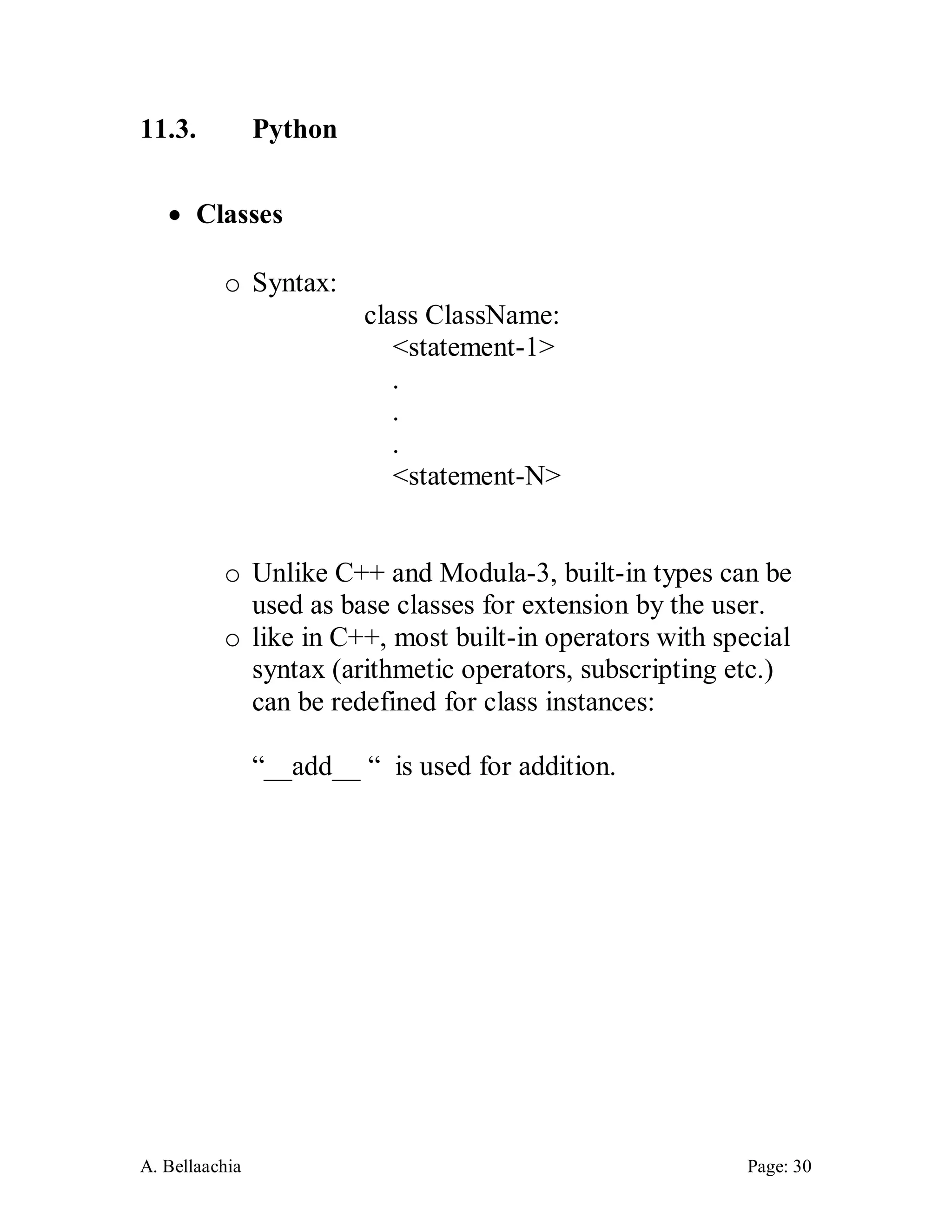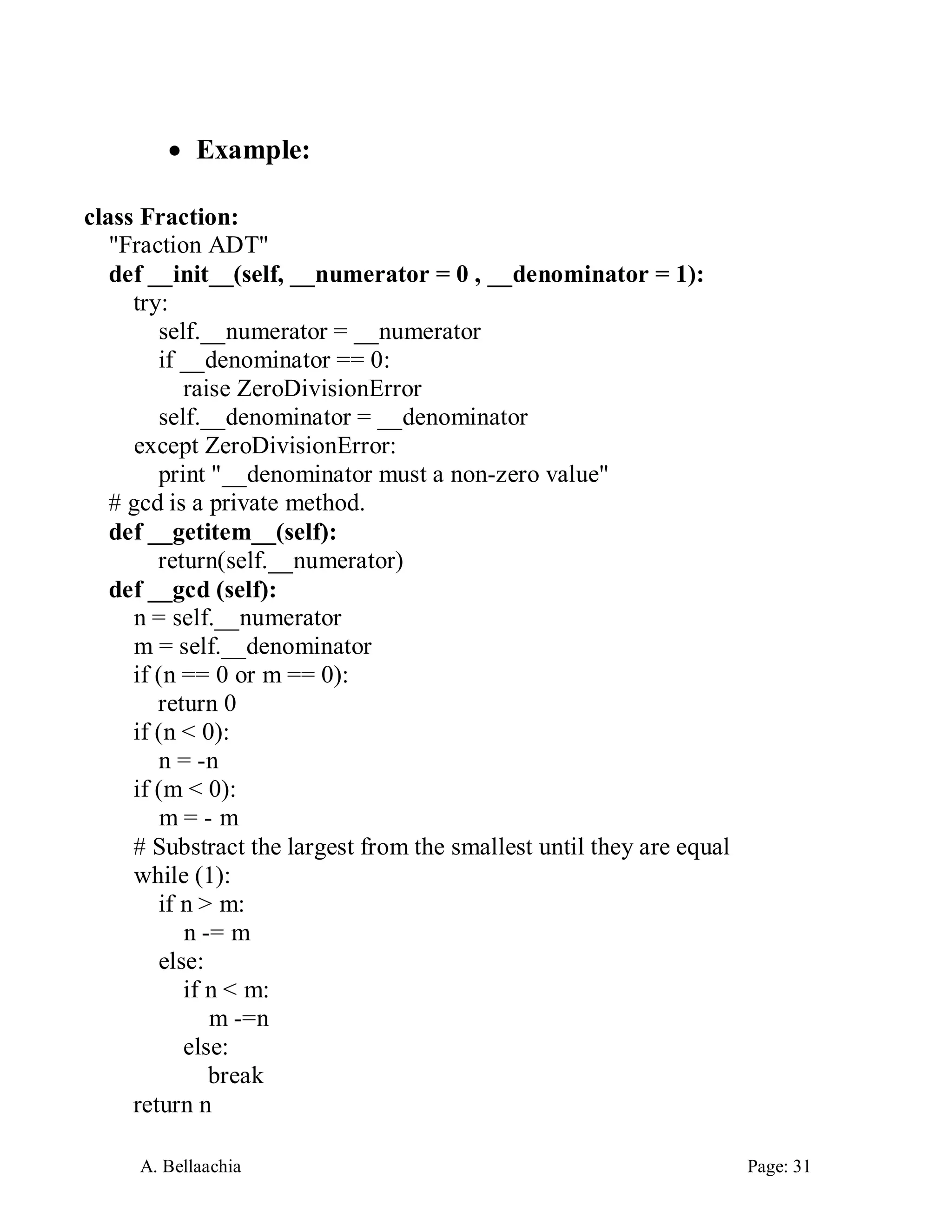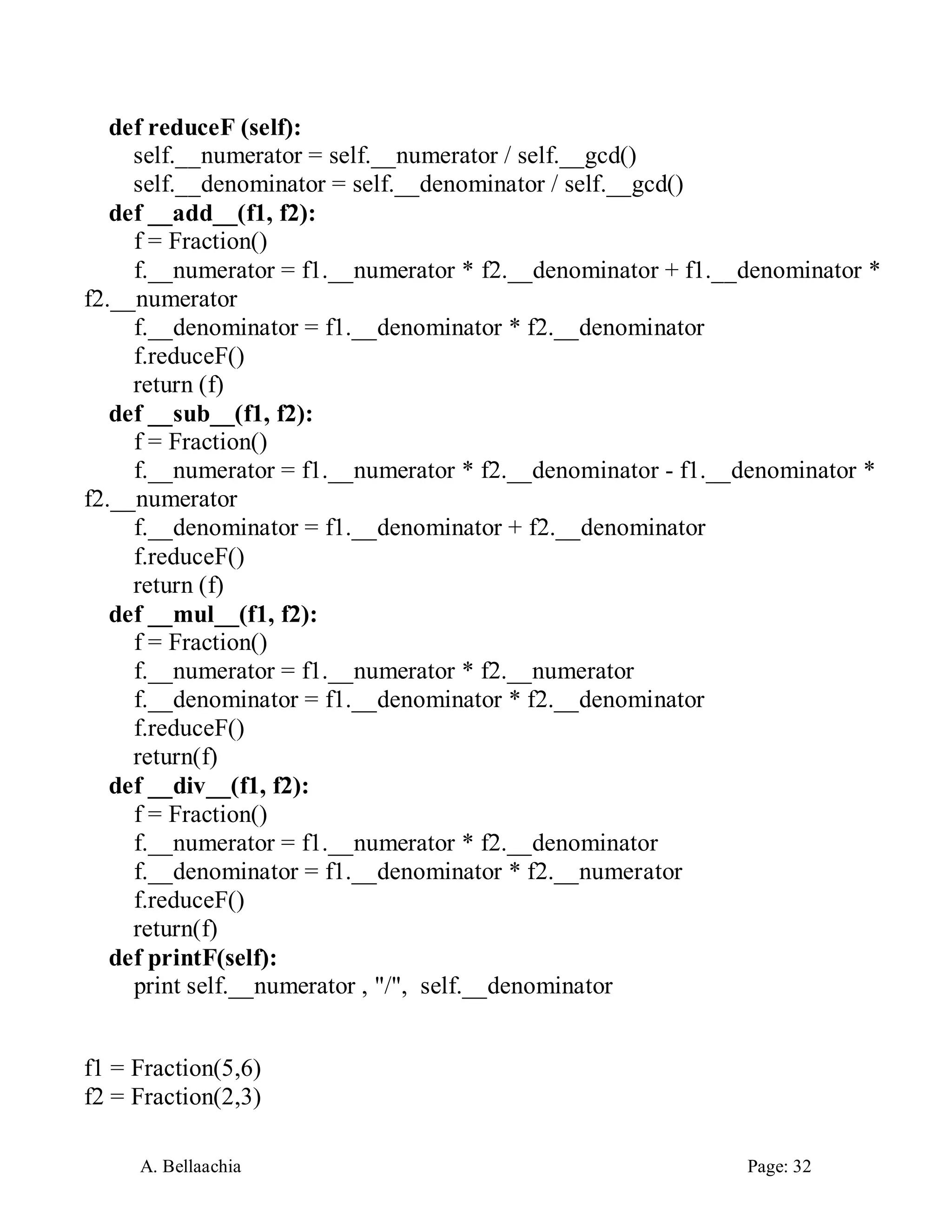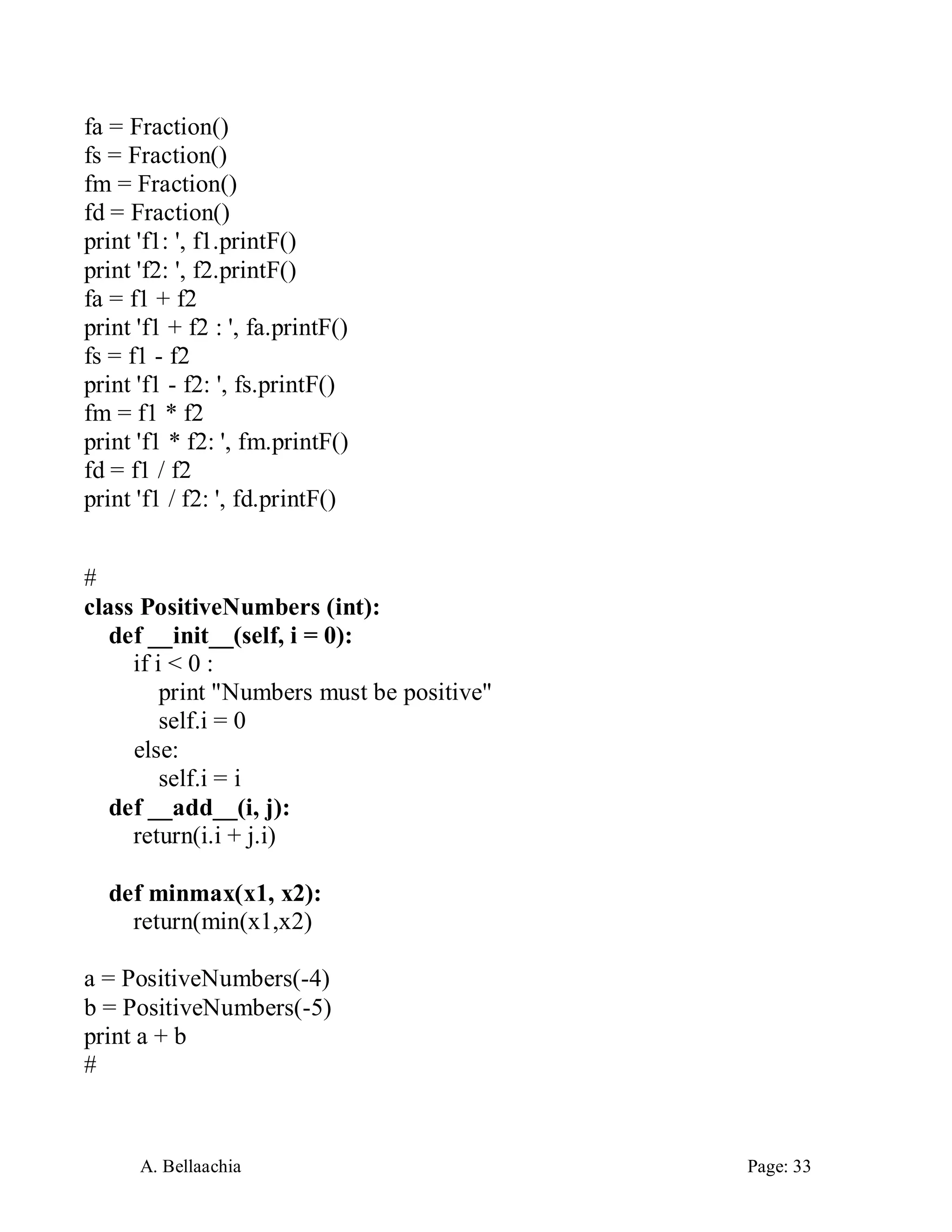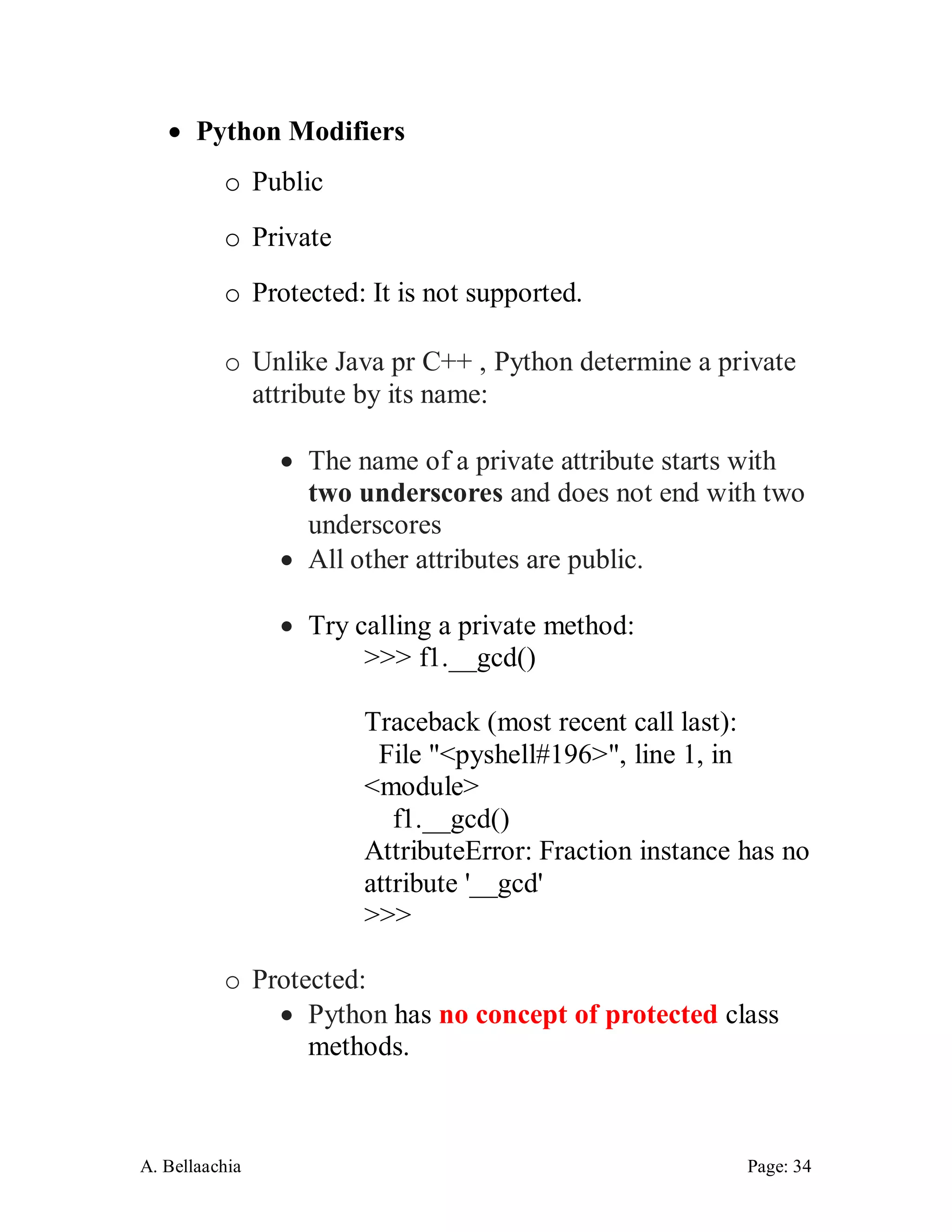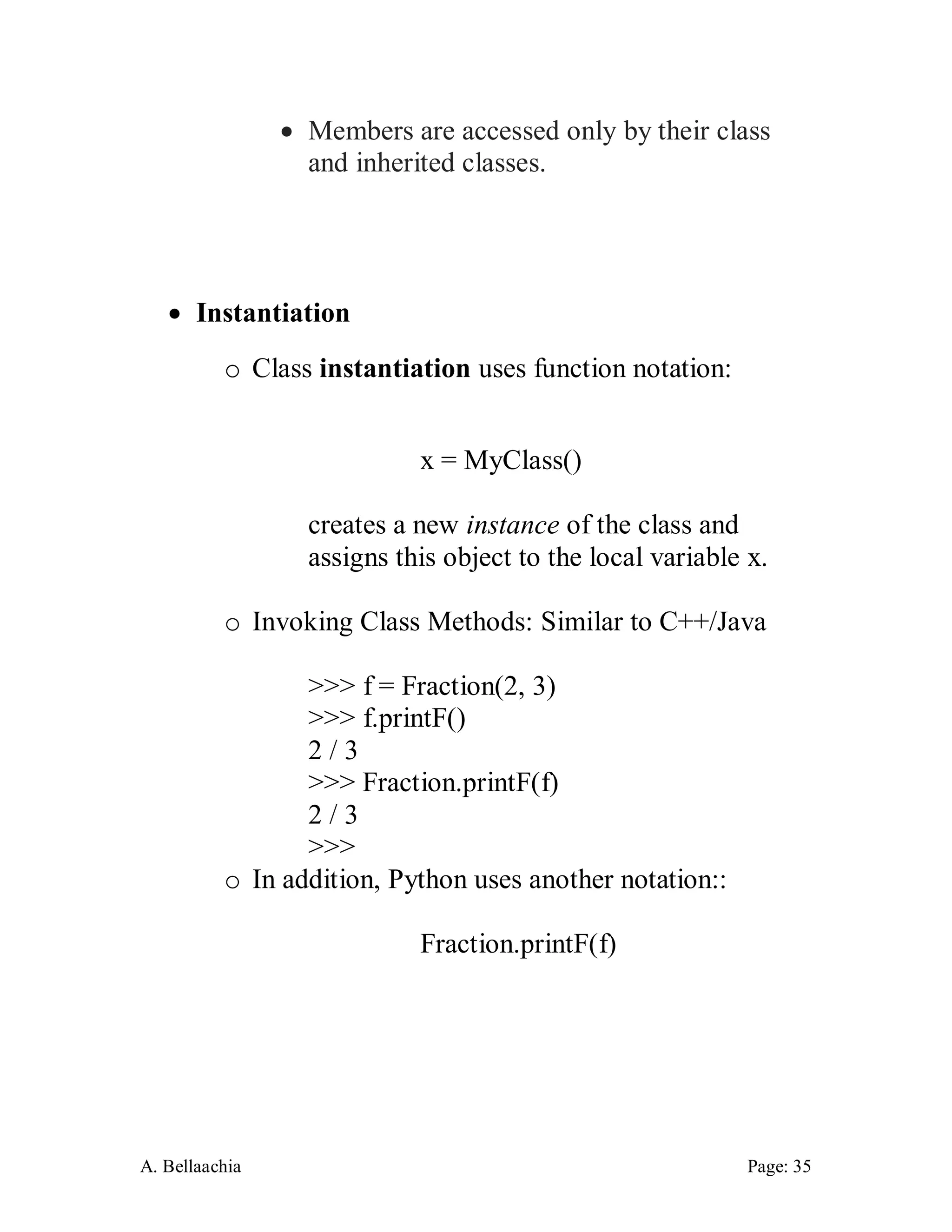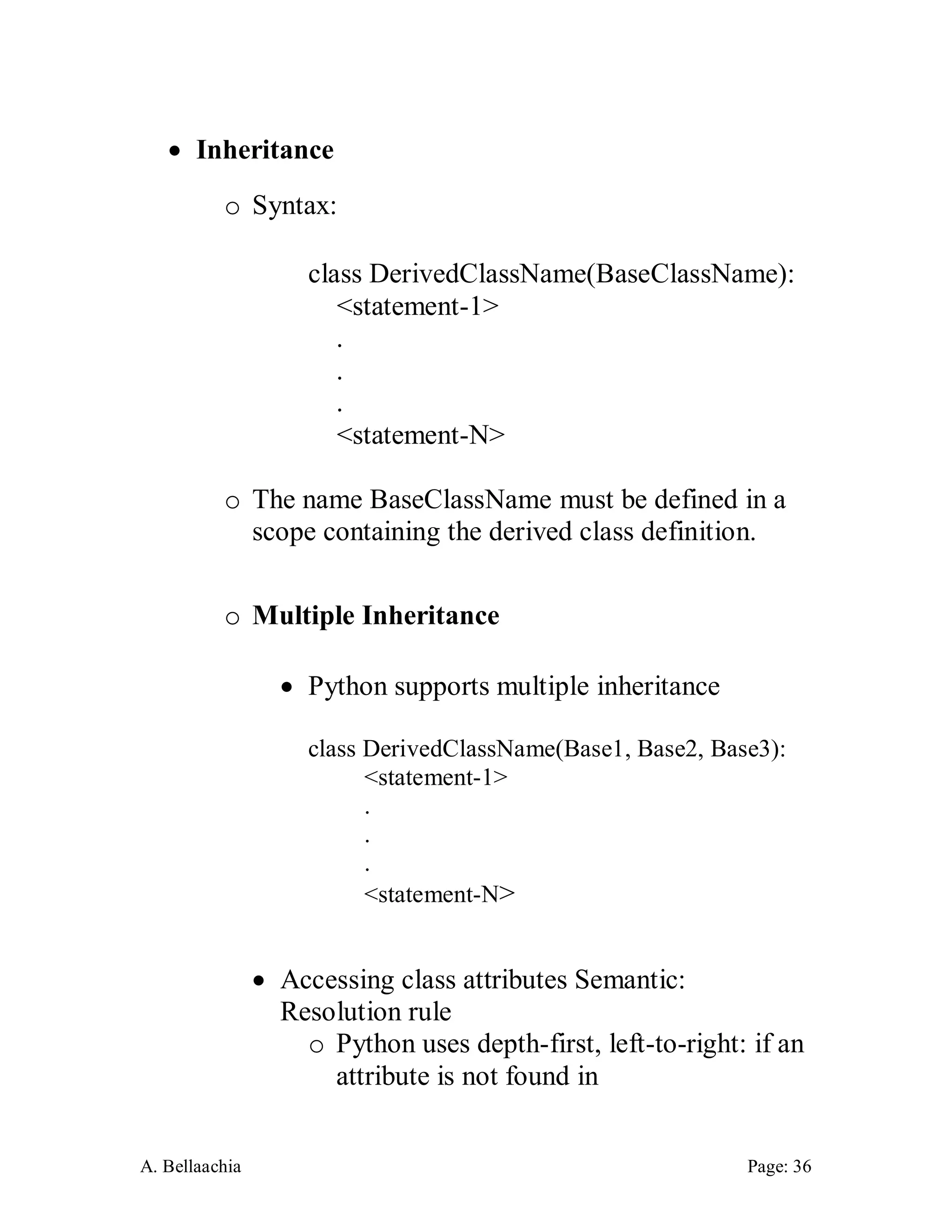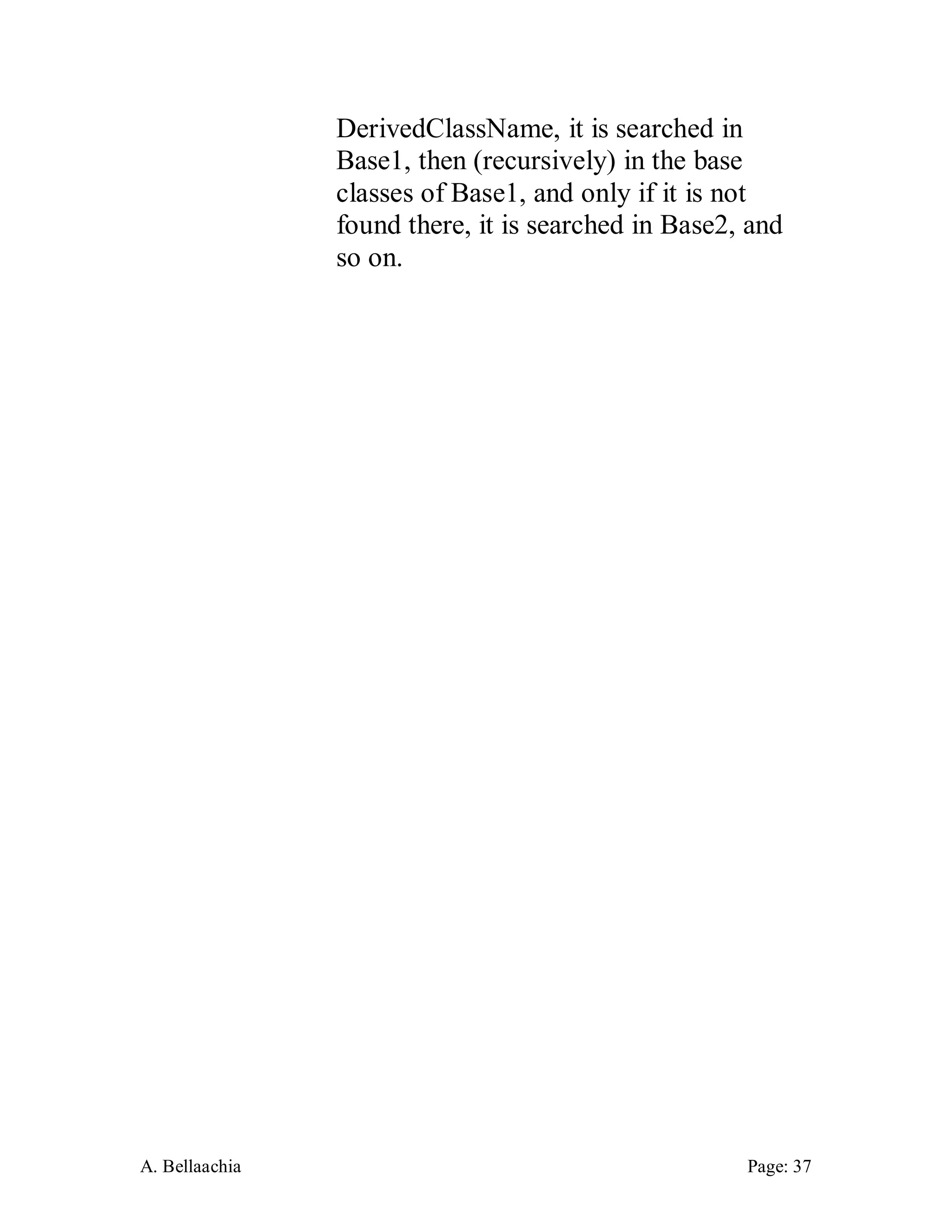This document provides an overview of object-oriented programming concepts including objects, classes, inheritance, encapsulation, and polymorphism. It discusses the history and objectives of OOP, defines key terms, and provides examples to illustrate concepts like how objects communicate through messages and how classes act as templates for creating objects. It also explains characteristics like encapsulation, inheritance, and polymorphism in OOP and gives examples of polymorphism in different languages.



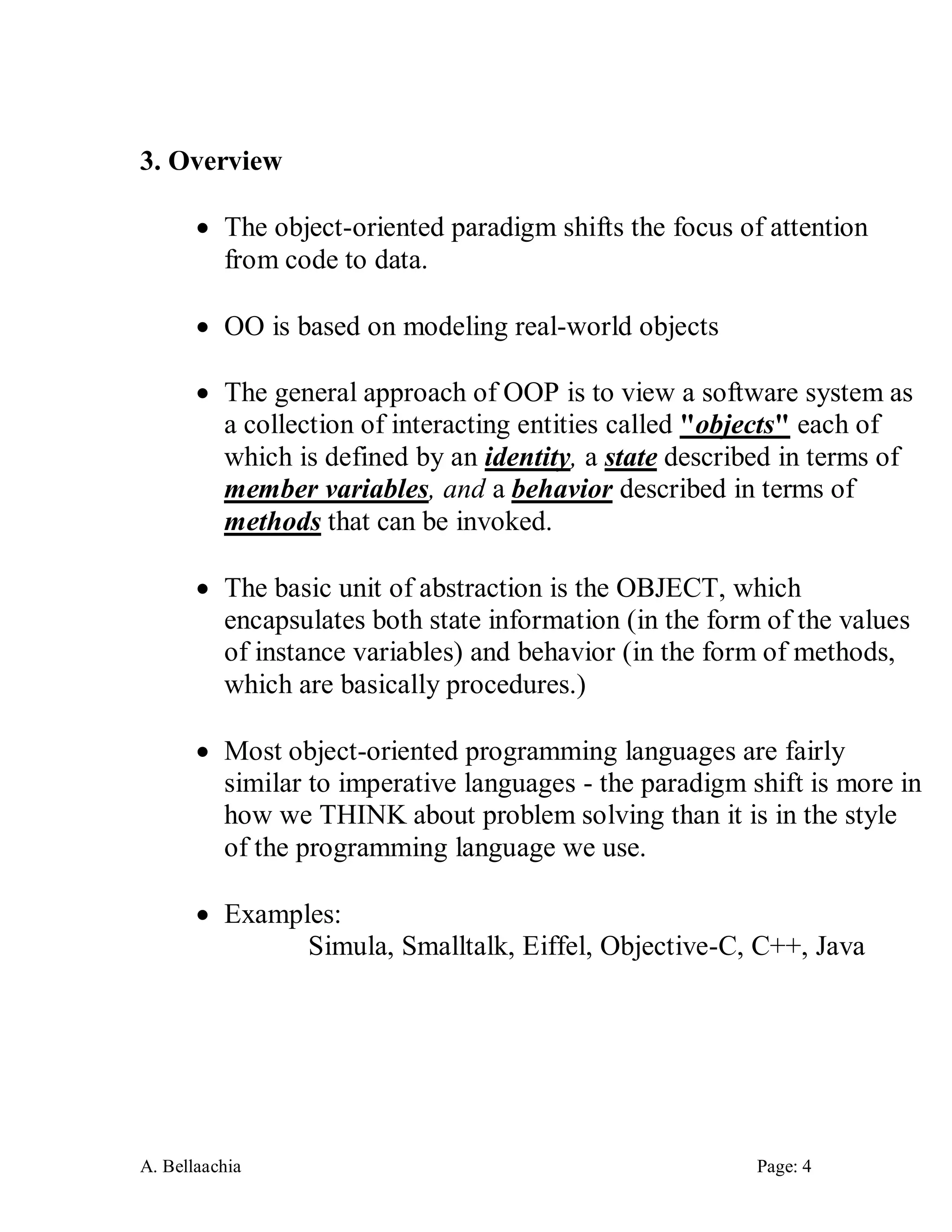
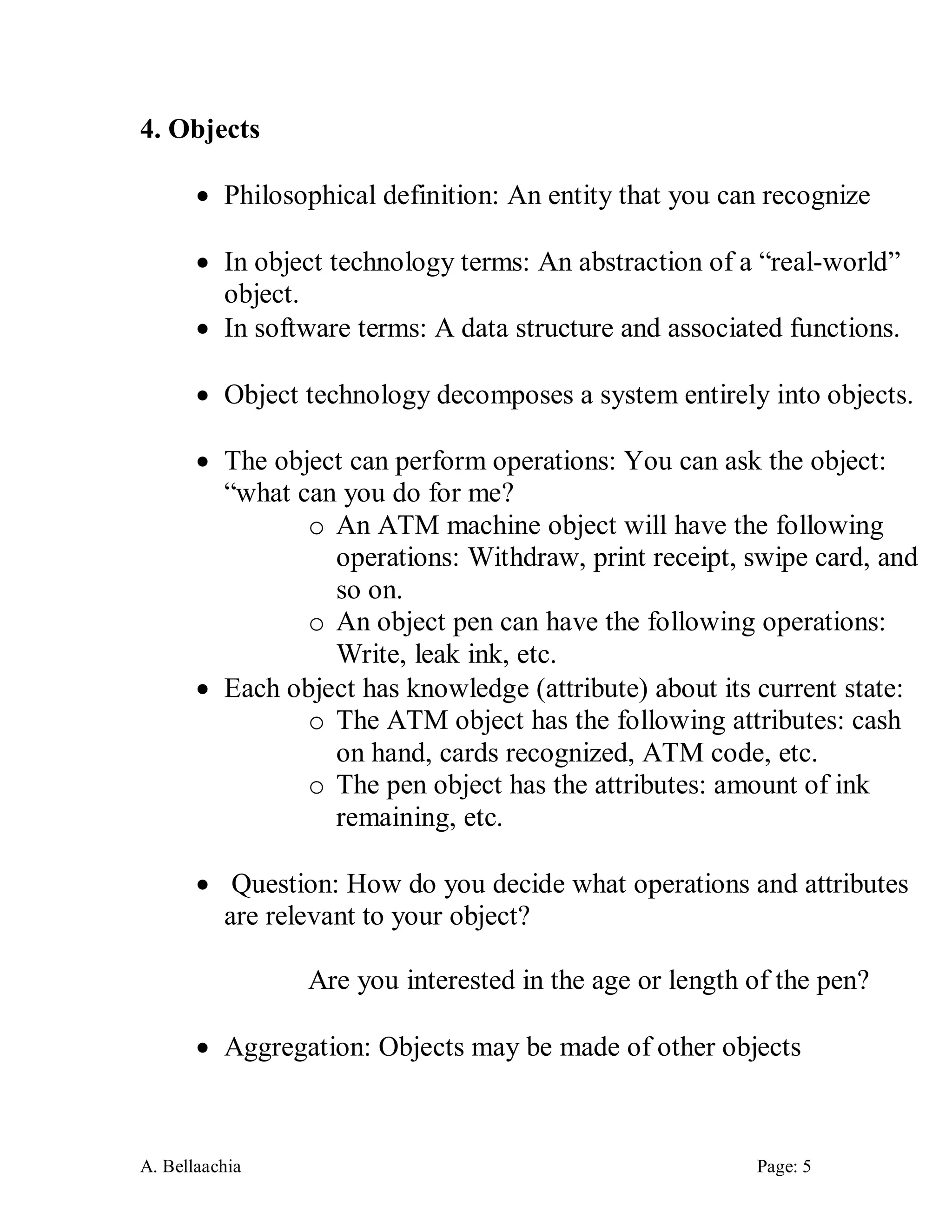
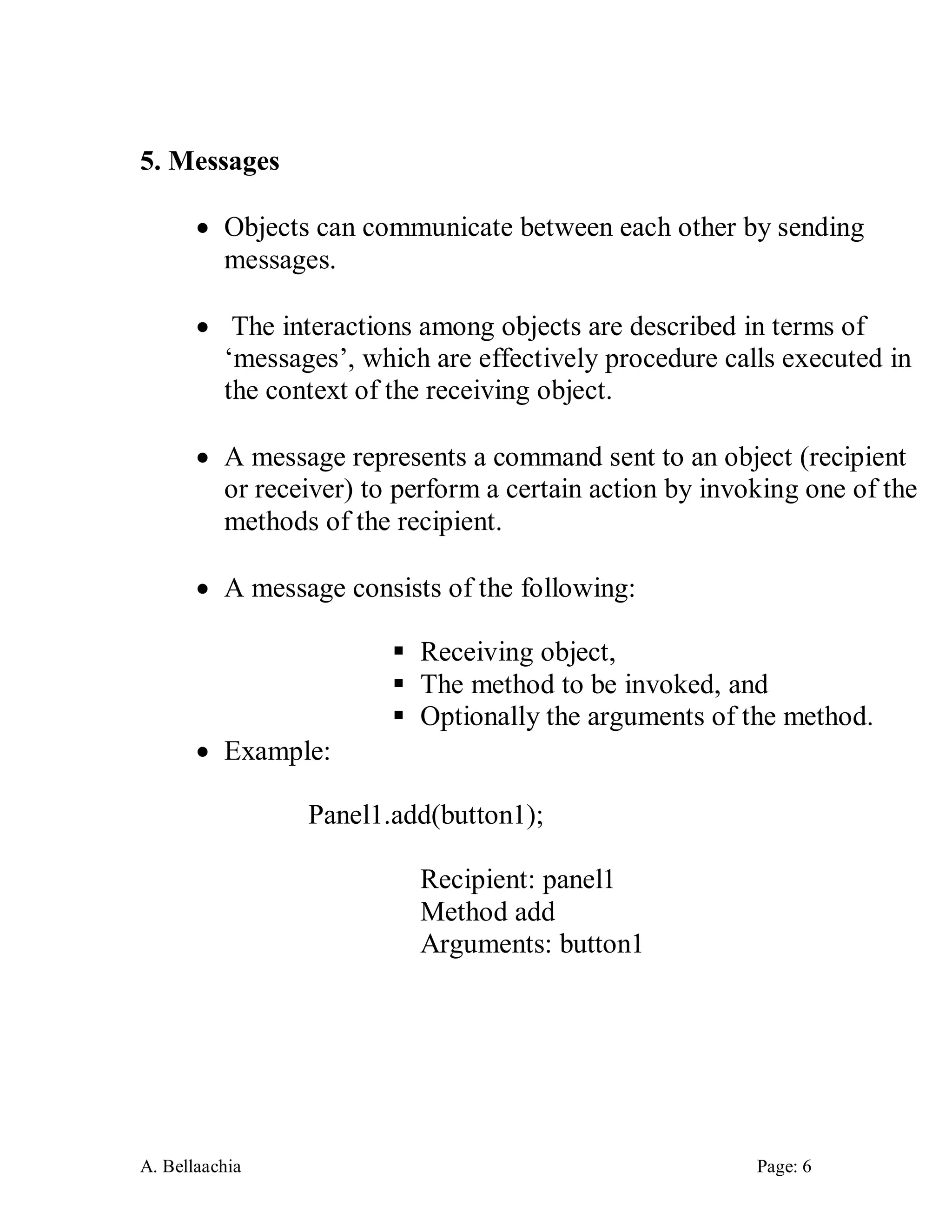
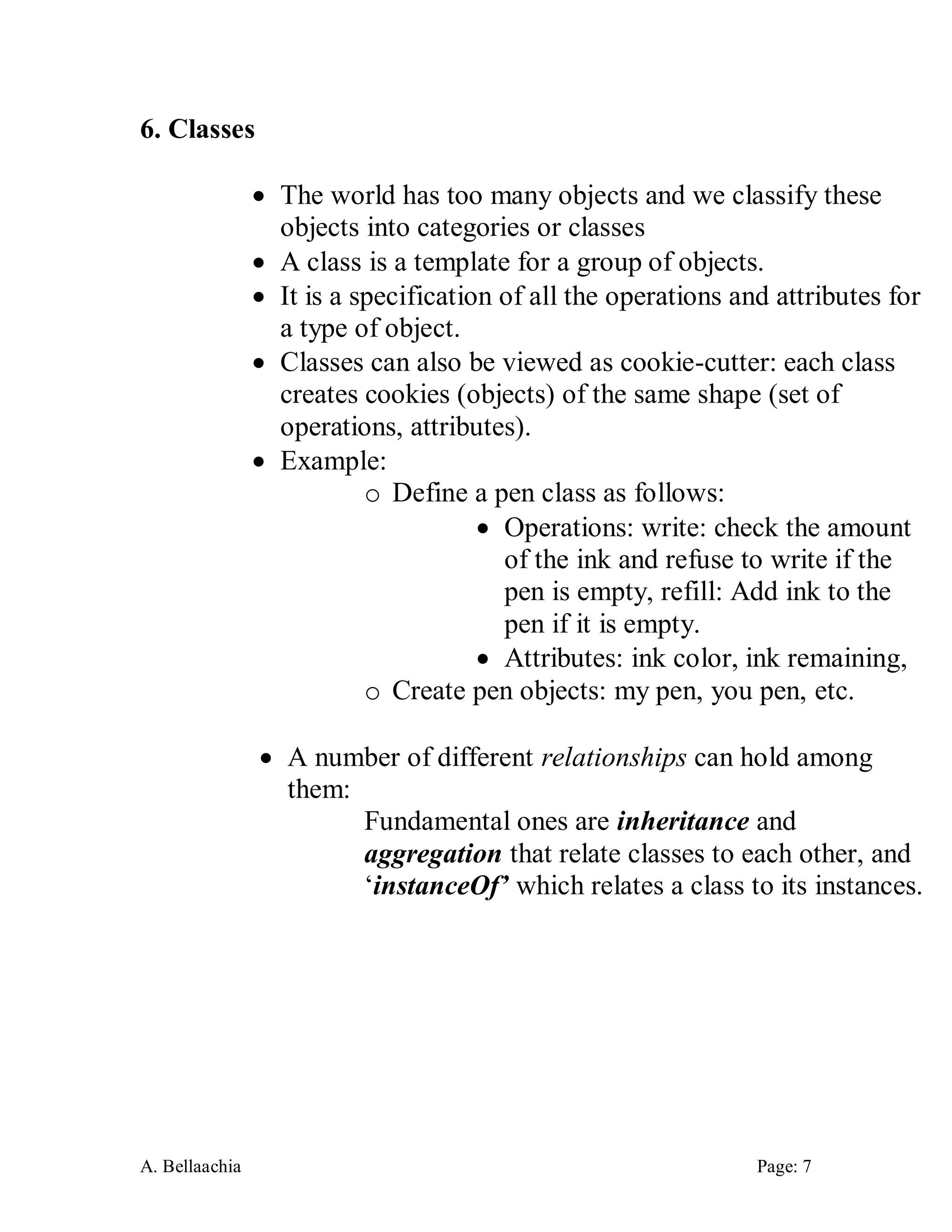
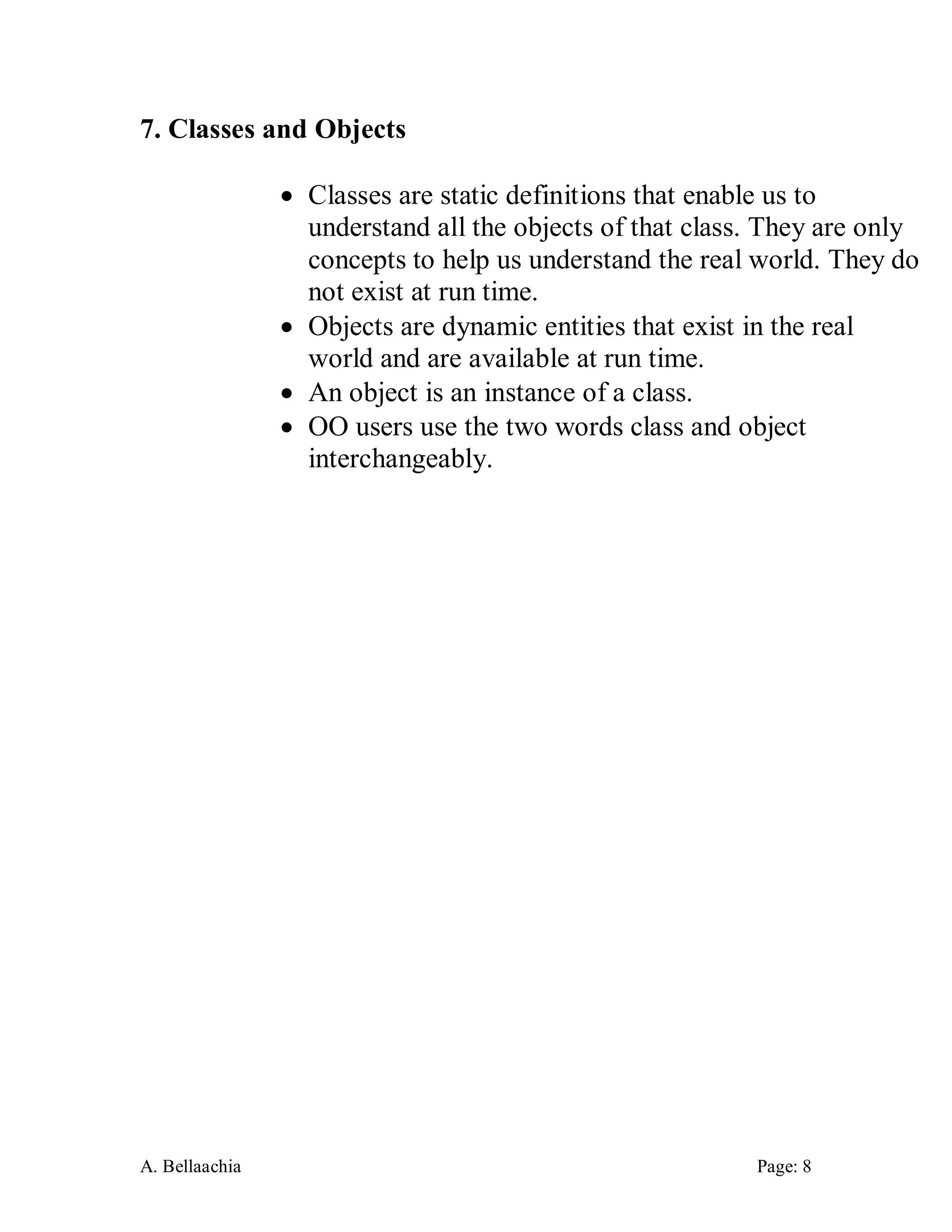
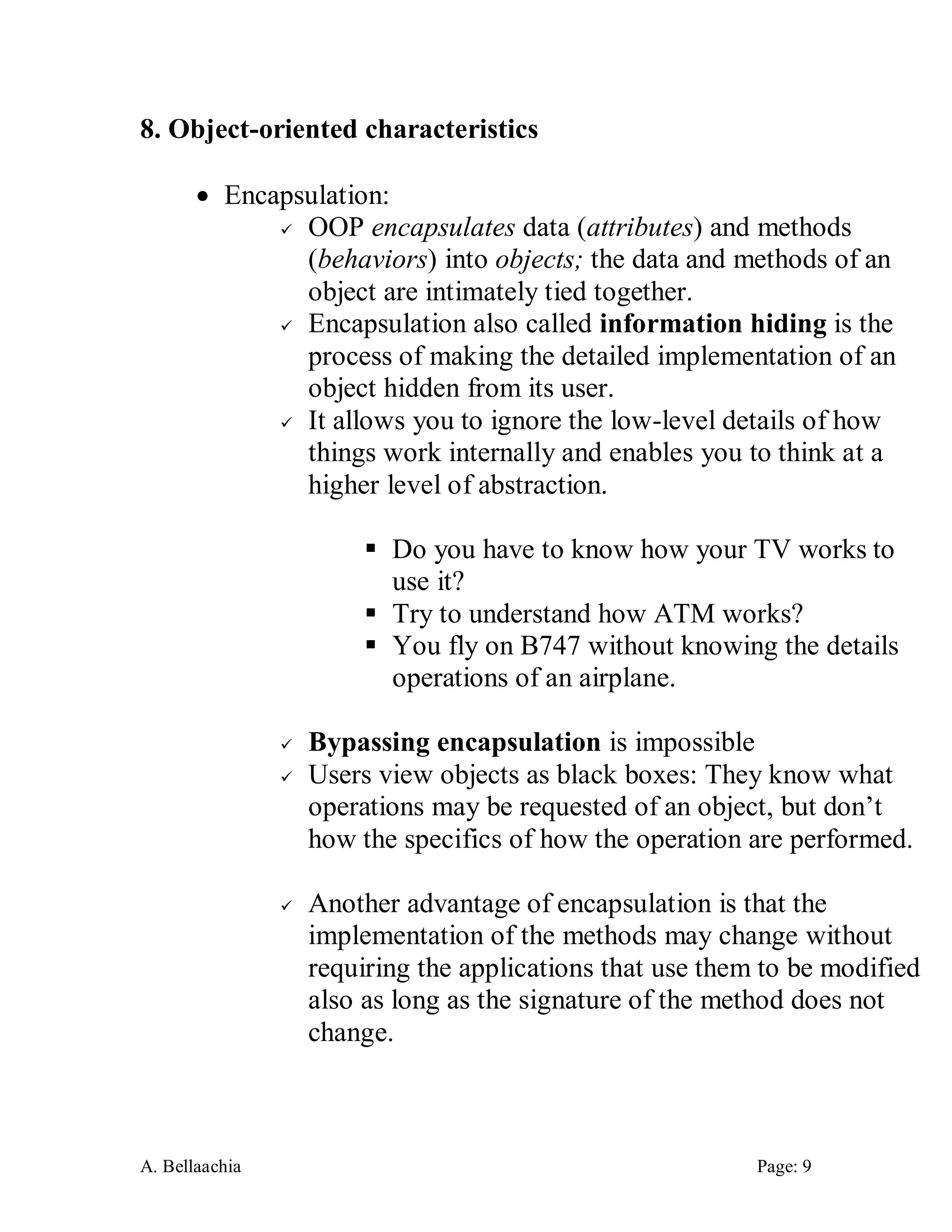
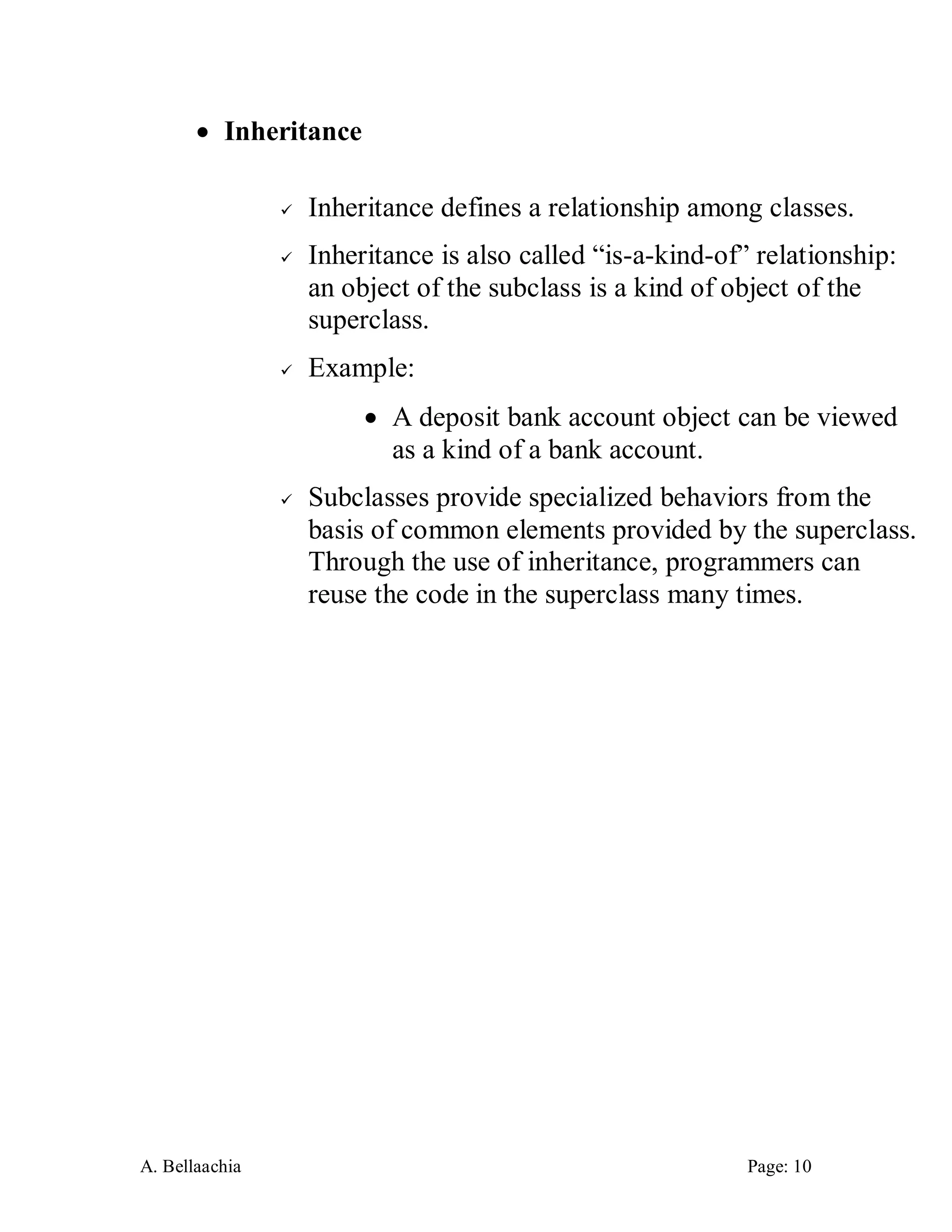

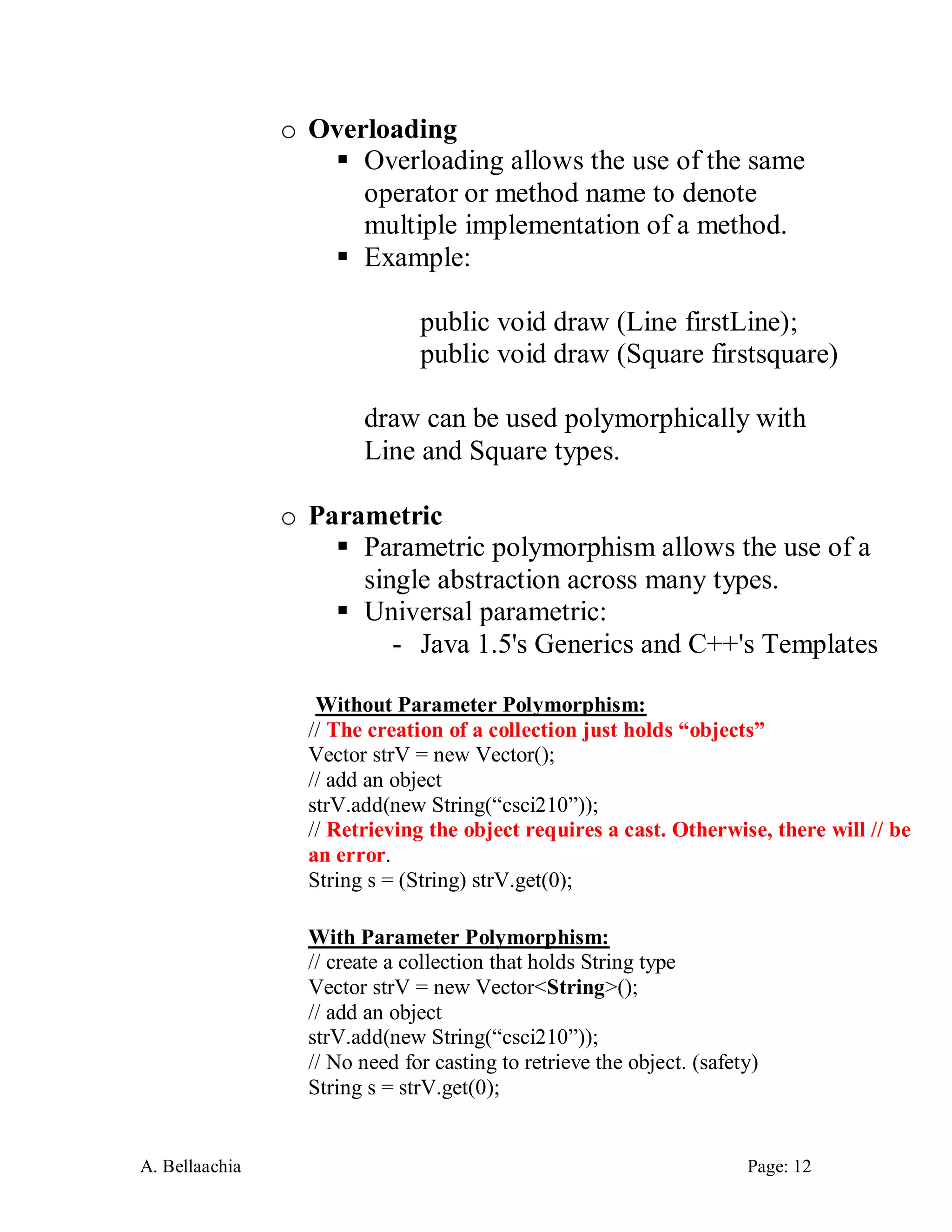

![A. Bellaachia Page: 14
Another example:
o Strongly-typed OO languages support variables that refer to any variable of a class, or to variables of derived classes:
class Stack {
public:
void push( int i ) { elements[top++] = i; };
int pop( ) { return( elements[--top] ); };
private:
int elements[100];
int top = 0;
};
class CountingStack: public Stack {
public:
int size( ); // Returns the num. of elements
};
A Stack pointer may also point to a CountingStack, but not vice versa:
Stack *sp = new Stack;
CountingStack *csp = new CountingStack;
sp = csp; // Okay
csp = sp; // Statically not sure; disallow
If we tried to access the size( ) member function of csp after the csp = sp; statement, what happens? (Run-time error)
If we do not use pointers, we have similar problems
Stack s;
CountingStack cs;
s = cs; // Okay: Coercion
cs = s; // Not allowed](https://image.slidesharecdn.com/oop-141210190627-conversion-gate02/75/Oop-14-2048.jpg)
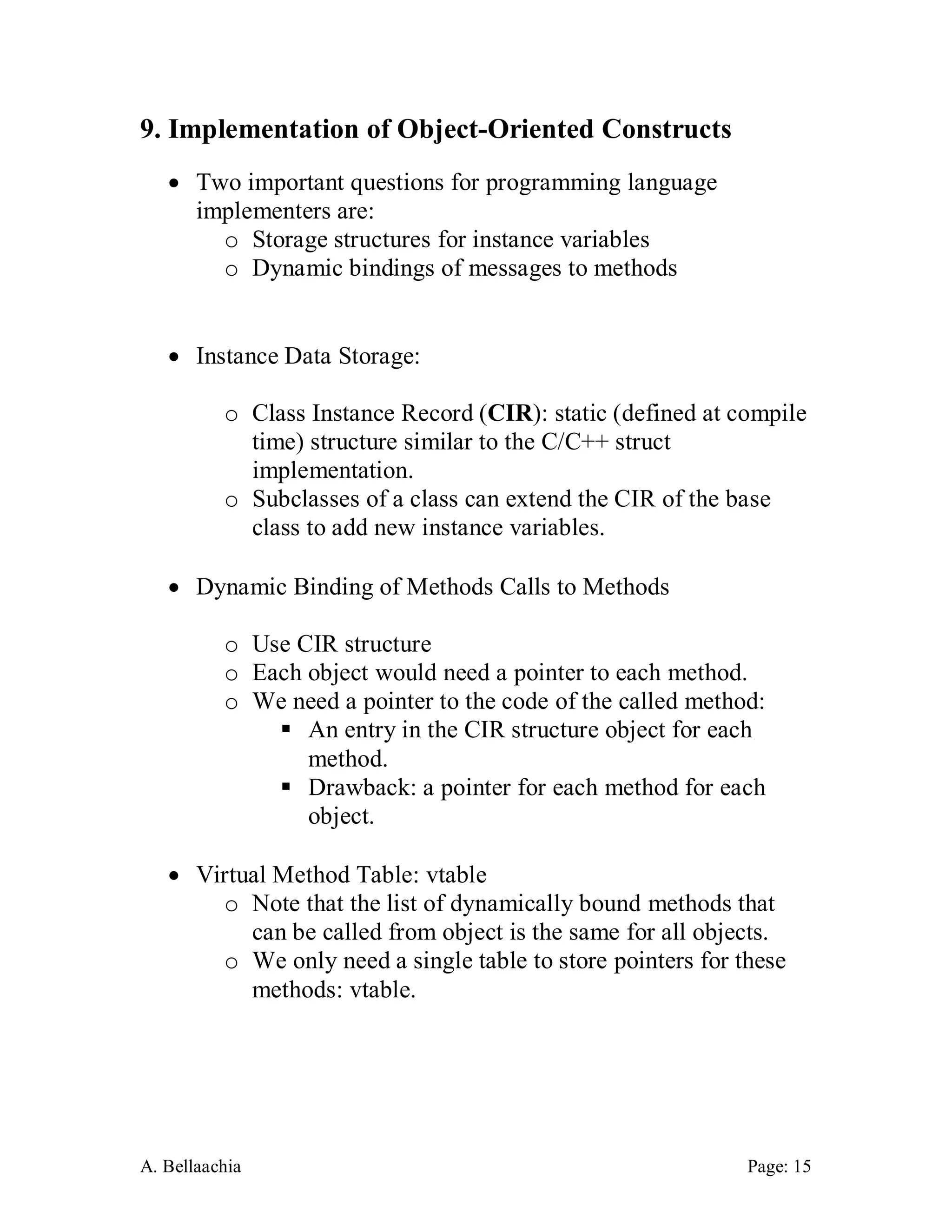

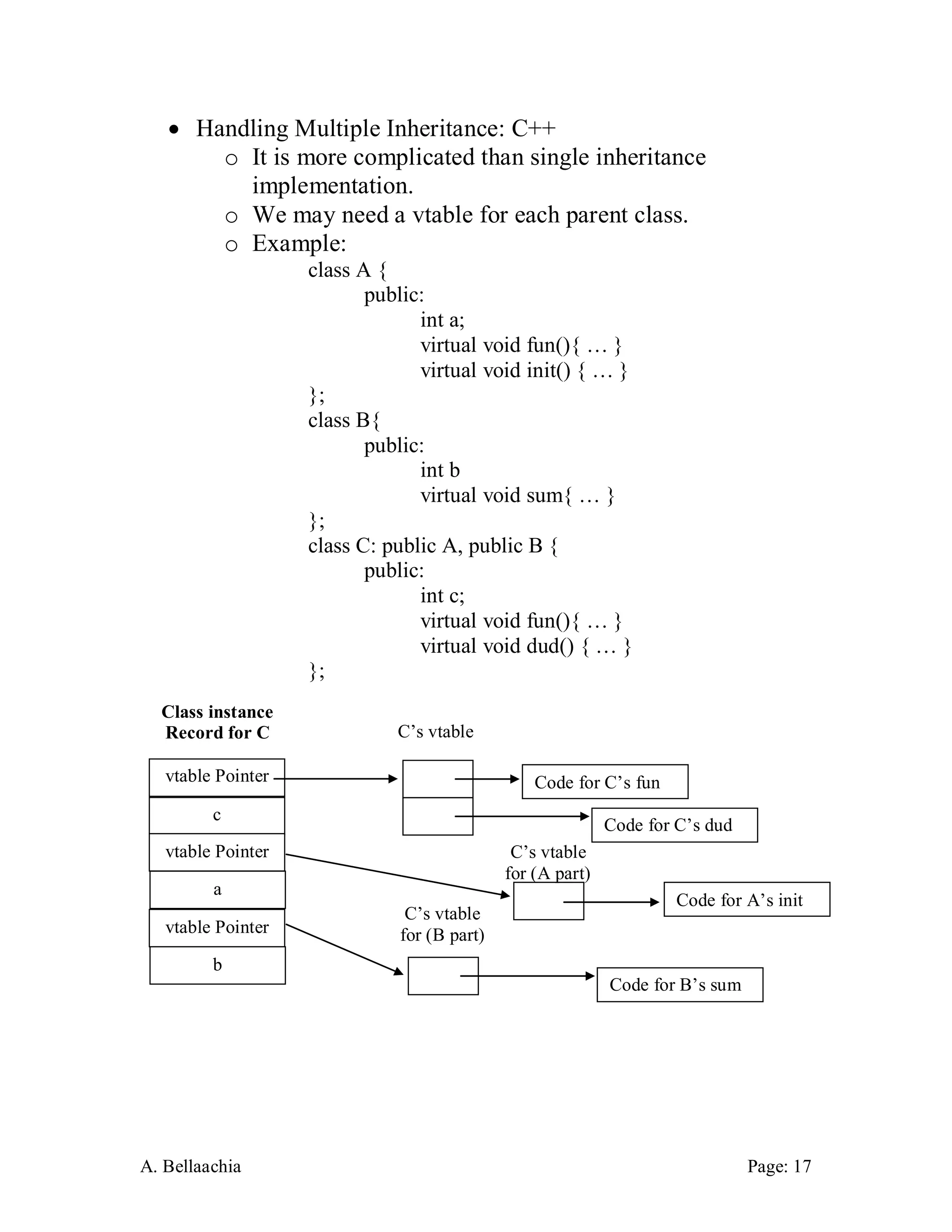
![A. Bellaachia Page: 18
10. Dynamic Binding
Derived classes may also add new private data, and redefine or override operations
If we redefine the push( ) method of CountingStack to count insertions, then we have overridden the old method:
class CountingStack_2: public Stack {
public:
int size( ); // Returns the num. of elements
void push( int i ) {
elements[top++] = i;
++counter;
};
private:
int counter = 0;
};
This introduces some ambiguity as to which method will be called for polymorphic variables:
Stack *sp = new Stack;
CountingStack_2 *csp = new CountingStack_2;
sp->push( 42 ); // Stack::push called
csp->push( 43 ); // CountingStack_2::push called
sp = csp; // Assignment okay
sp->push( 44 ); // Which push is called?
sp->push(44);:
stack::sp->push(); or
counting_stack_2::sp->push();
Static binding:
o Static binding means that the method of the pointer variable type is called: stack::sp->push();](https://image.slidesharecdn.com/oop-141210190627-conversion-gate02/75/Oop-18-2048.jpg)

